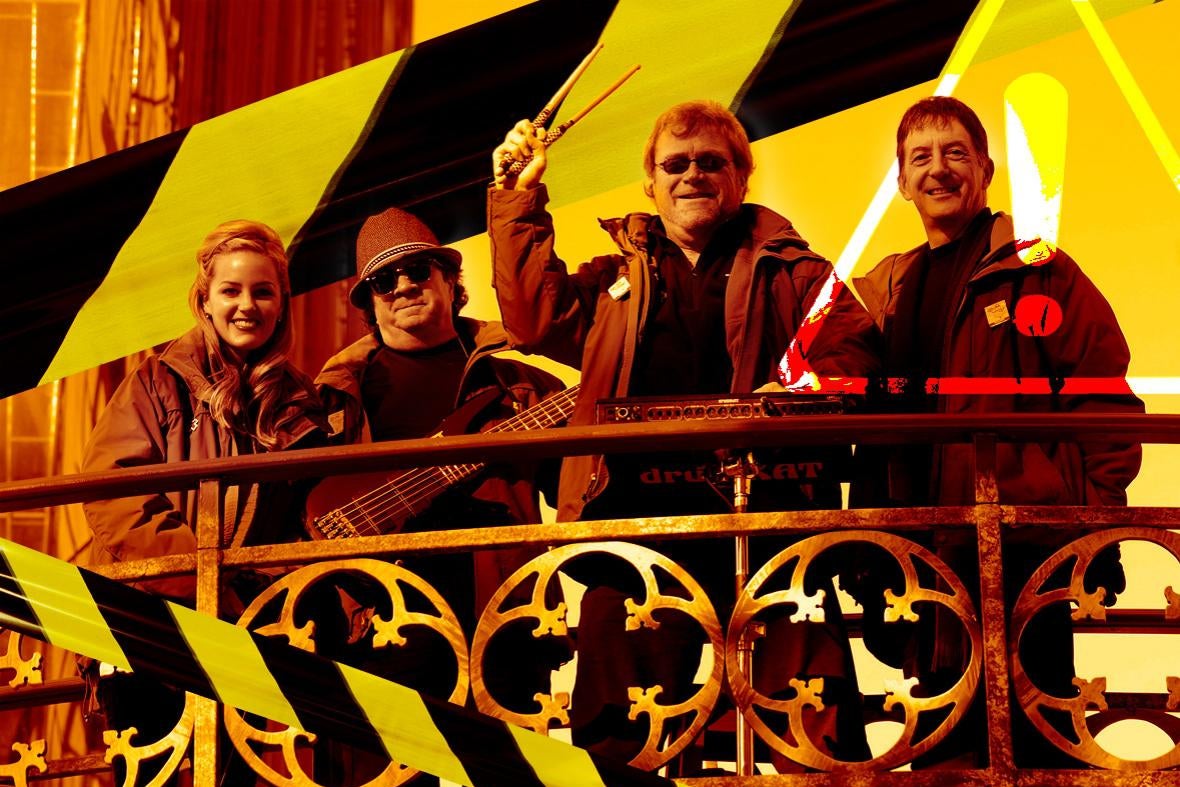If Dickens taught us anything, it’s that Christmas is a time for facing your demons. You can’t very well run out after a dark night of the soul and hand out holiday geese if you don’t dispense with those ghosts in the first place, so here goes: I am a Mannheim Steamroller addict. In recovery, yes; but like most addictions, my attachment to the world’s leading Christmas band fusing Renaissance recorders and orchestral brass with ’80s electro-drum fills will never be completely overcome.
This time of year is, as you might imagine, particularly difficult. Every time that rolling bass synth crescendo signaling the onset of “Deck the Halls” or the stereo-panned MIDI chimes introducing “Carol of the Bells” catches my ear in a local shop, I break out into a cold sweat. My body wants to groove to the bewitching interlocking rhythms and shiver to the absurdly epic arrangements—but the music major in my head fights back. “Remember how your early attachment to this cheese-fest basically ensured that you could never be a real art music composer?” that frustrated fellow asks. Yes—I remember. I remember how all of my pre-collegiate music sounded extremely like band leader Chip Davis’ synthy, percussion-driven fantasias after I made my mom take me to a concert, and I remember how a composition professor basically laughed at me when I showed him a score containing unironic splash cymbals. I remember struggling to get the Mannheim sound out of my head countless hours in front of the keyboard and never quite succeeding. What I’m saying is, my addiction to Mannheim maybe ruined my dreams of writing music professionally. At least I get to write some (hopefully therapeutic!) words about it for you instead.
Now, obviously not everyone has such a personal history with the “World’s No.1 Best-Selling Christmas Artist,” but we all unavoidably encounter him and his merry Midwestern troubadours during the holiday season. How should one go about making peace with music that is objectively ludicrous and yet clearly maintains some kind of hold on the culture?
A good first step is acknowledging that working with a limited repertoire is hard. There are only so many classic carols to interpret, and Mannheim has made a go at them all over the course of their dozens of original albums (most of them platinum), compilations, and shameless self-remixes. If you love Christmas music, you want to hear fresh takes on the canon from time-to-time. Davis’ self-described genre of “18th-century rock ‘n’ roll” may not be exactly what you had in mind, but you can’t deny that the label matches the contents. And, as goofy this high-octane “Angles We Have Heard on High” arrangement I’m listening to right now might be, it’s better than Justin Bieber oozing awkward innuendo all over “The Little Drummer Boy.”
You might also intellectualize the encounter by noting how perfectly Davis’ intensely libertarian, capitalistic values align with the general ideology of Christmas in America. If you read Davis’ statements about himself and the founding of Mannheim, you’ll find that he’s very invested in the notion of the self-made man, particularly the sort that sees himself as a kind of Randian genius-among-idiots. He runs the multimillion dollar Mannheim empire from a 150-acre compound outside Omaha, where he carefully manages the wholesome, “Christmas time is family time” brand and signs-off on production of hundreds of fabulously tacky Steamroller-branded products you can gift to your loved ones. There’s nothing wrong with being a good businessman, of course—I actually sort of admire Davis’ encompassing vision, in a creepy Willy Wonka sort of way. But there is something very American about having built one’s Thomas Kinkade idyll (and great wealth) primarily on top of other people’s earlier work. To be fair, though, Christmas is a time when all of us are guilty of a little me-and-mine escapist isolationism—which probably explains why Mannheim tracks are so popular with the fuse-box-blowing, neighborhood irradiating home lightshow set.
If the music propelling those psychedelic energy drains doesn’t speak to you even a little, it may be helpful to approach Mannheim Steamroller instead as a case study in whiteness. It’s a fact that whiteness often goes unmarked in our culture while other racialized groups accrue specific, often defamatory meanings. But go to a Mannheim concert—as I have more than once—and you will see it made visible. I have never seen so many white people basking in their whiteness (and grandkids loathing their grandparents) as I did during a research expedition out to a Long Island show a few years back. It struck me there, surveying the Caucasian concert hall, that if one wanted to begin to define a white aesthetic, it would have to involve earnest harpsichord jam sessions, strained tethers to classicism, passionate sawing on an electric violin, and a deep conviction that history is something one can engage with playfully and at liberty, rather than as a circumscription on the present.
Anyway, I’ll leave further research to the anthropologists, but I’ll leave this piece with two final thoughts. First, the acoustic arrangements, especially of the older carols, are actually often lovely. And Mannheim’s reading of “Stille Nacht” gets me every time. Second, giving into vulgar sentiment is kind of the point: Christmas is almost certainly the kitschiest of holidays, and probably has been since the wise men brought gaudily wrapped perfumes and currency to an infant. Not much we can do about it now. Probably best to lean into it hard, like a hi-hat into a 16th-century hymn.
